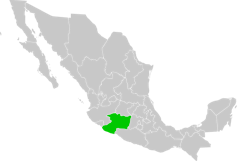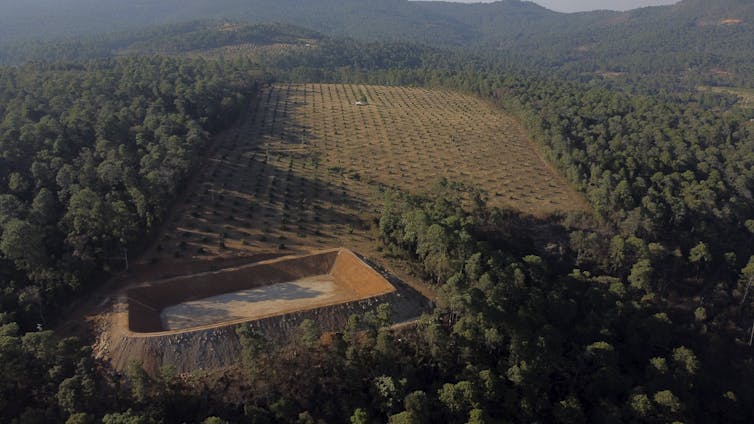Key Takeaway:
The consumption of avocados has tripled from 2001 to 2020, with 90% grown in the southwest Mexican state of Michoacán. However, this intensive avocado production is causing significant environmental damage. Monoculture, which introduces homogeneous, high-yielding plant varieties, leads growers to abandon native crops, making the local ecosystem more vulnerable to threats such as pest infestations and reducing food options. It also erodes fertile soils and increases the use of agrochemicals. Monoculture also drives deforestation, with Mexican officials estimating that avocado production spurred the clearance of 2,900 to 24,700 acres of forests per year from 2010 through 2020. Avocado trees consume four to five times more water than Michoacán’s native pines, jeopardizing water resources for human consumption. Growing avocados imposes heavy costs at home, and the industry is one of the most-regulated exports from Mexico. Diversifying agriculture in the region and reforesting Michoacán could help restore the Sierra Purhepecha’s ecology and protect the rural economy.
Consumers’ love for avocados seems to know no bounds. From 2001 through 2020, consumption of this fruit laden with healthy fats tripled, rising to over 8 pounds per person yearly.
On average, 90% of avocados are grown in the southwest Mexican state of Michoacán. As with other foods that have become trendy, such as acai berries, or widely used, such as palm oil, intensive avocado production is causing significant environmental damage.
My research on 20th-century Latin American environmental history examines how the transnational movement of people, foods and agricultural technologies has changed rural landscapes in Latin America. Currently, I’m writing a book on the development of a global avocado industry centered in Michoacán, the world’s largest avocado-growing region.

My research shows that raising avocados is economically beneficial in the short term for farmers, which in Latin America typically means medium-sized operators and agribusinesses. It also helps growers – people in rural areas who grow subsistence crops. Over time, though, every serving of avocado toast takes a toll on Michoacán’s land, forests and water supply. Rural growers, who lack the resources of large-scale farmers, feel those impacts most keenly.
The environmental effects of monoculture
Michoacán is the only place on earth that grows avocados year-round, thanks to its temperate climate, abundant rainfall and deep, porous volcanic soils that are rich in potassium, a vital plant nutrient. Even under favorable conditions, however, monocultures are never environmentally sustainable.
Introducing homogeneous, high-yielding plant varieties leads growers to abandon native crops. This makes the local ecosystem more vulnerable to threats such as pest infestations and reduces food options. It also erodes fertile soils and increases use of agrochemicals.
Monoculture also can drive deforestation. Mexican officials estimate that avocado production spurred the clearance of 2,900 to 24,700 acres of forests per year from 2010 through 2020. And it’s resource intensive: Avocado trees consume four to five times more water than Michoacán’s native pines, jeopardizing water resources for human consumption. Avocados generate billions of dollars in export revenue for Mexico, but growing them imposes heavy costs at home.
Bred in California
Avocados have been a part of the Mexican diet since ancient Mesoamerica, but the Hass – the most popular variety worldwide today – was bred in modern California.
In the late 19th century, scientists from the U.S. Department of Agriculture embarked on a mission to collect and send home samples of food plants from around the world. The goal was to adapt and grow these plants in the United States, reducing the need for food imports.
Collecting plant genetic material from Latin America and imposing quarantines on avocados from Mexico starting in 1914 provided vital support for the development of a U.S. avocado industry. Farmers in California and Florida bred multiple strains from the material that USDA explorers collected. But U.S. consumers in the early 1900s weren’t familiar with this new food and hesitated to buy avocados of various textures, sizes and colors.
In response, farmers began selecting plants that grew avocados with small seeds, abundant flesh, hard skin, a creamy texture – and, most importantly, high yields. According to industry lore, Rudolph Hass, a postman and amateur horticulturalist in Southern California, stumbled on a new variety in the late 1920s while trying to propagate a variety called Rideout.
Within several decades, the Hass became the dominant avocado grown in California. By the 1950s, Mexican farmers who had connections with U.S. brokers had introduced the Hass south of the border.
How the Hass changed Michoacán
In the early 1960s, Michoacano cantaloupe farmers acquired lands to expand their production by growing avocados. Soon they focused on exclusively producing the Hass.
Many local Indigenous Purhépecha people, along with non-Indigenous campesinos, or country farmers, rented or sold land to the emerging avocado farmer class. In the 1980s, campesinos began to grow the fruit too. This was an expensive, long-term undertaking: It took four years for the trees to produce marketable avocados, but growers had to buy the trees, clear land for them and provide water, fertilizer and pesticides to help them grow.
Cantaloupe farmers could afford to invest capital for four years with no cash return. Campesinos had to rely on loans or remittances from family members abroad to develop avocado orchards.
As production expanded, agrochemical distributors, tree nurseries and packing houses sprouted on Purhépecha lands, clearing native pine trees and eroding the fertile soils. Mexico passed a law in 2003 that prohibited clearing forests for commercial agriculture, but by this time campesinos in Michoacán were already growing Hass avocados on a large scale.

The guacamole wars: NAFTA and avocados
After the adoption of the North American Free Trade Agreementin 1994, California avocado farmers lobbied to maintain a quarantine that the USDA had imposed on Mexican avocado trees in 1914 because of an alleged plague. After three years of drought in California and testing of Michoacán orchards for pests, Mexico began shipping Hass avocados to the U.S. in 1997.
However, the only region the USDA certified to send avocados to the United States was Michoacán. Mexico had to allow the USDA to station agents in Michoacán to verify that certified orchards fulfilled agreed conditions to minimize the risks of plant diseases.
Companies such as Calavo, a California-based produce distributor, began to buy, pack and ship avocados grown in Michoacán to U.S. customers. In the process, they became major competitors for California avocado farmers.
Beyond monoculture
Today, avocados are one of the most-regulated exports from Mexico. However, these rules do little to address the industry’s environmental impacts.
Farmers in Michoacán continue to clear woodlands, spray agrochemicals, exhaust aquifers and buy Purhépecha communal property, converting it to smaller, privately owned lots. Rising profits have spurred violence and corruption as some local authorities collude with organized crime groups to expand the market. In 2022, the U.S. briefly suspended Mexican avocado imports after a U.S. plant safety inspector in Michoacán received a threatening phone call.
Visiting Michoacán on Feb. 26, 2024, U.S. Ambassador to Mexico Ken Salazar pledged that the U.S. would modify its protocol to block imports of avocados grown in illegal orchards. However, this won’t restore local ecosystems.
As I see it, expecting small-scale growers to protect the environment, after the ecology and economy of Michoacán has been radically altered in the name of free markets and development, puts responsibility in the wrong place. And boycotting Mexican avocados likely would simply lead growers to look for other markets.
Diversifying agriculture in the region and reforesting Michoacán could help to restore the Sierra Purhepecha’s ecology and protect the rural economy. One Indigenous community there is successfully growing peaches and lemons for the domestic market and avocados for the international market, while also planting native pines on their communal lands. This is a potential model for other farmers, although it would be hard to replicate without state support.





























